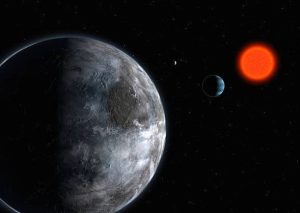NASA: Potentially Habitable “Super-Earth” Discovered Just 137 Light-Years Away!
In the vast cosmos, a new neighbor has emerged – TOI-715 b, a “super-Earth” located a mere 137 light-years away from our home planet.
This recent discovery, announced by NASA, has sparked excitement among scientists as they delve deeper into the tantalizing question of whether this distant world could harbor conditions suitable for life.
Exploring the Habitable Zone
Measuring about one-and-a-half times the width of Earth, TOI-715 b orbits within what NASA describes as a “habitable zone” around its parent star.
This zone, a region at an optimal distance from the star, is deemed capable of maintaining temperatures conducive to the presence of liquid water on a planetary surface – a key ingredient for life as we know it.
While the concept of a habitable zone is promising, astronomers caution that additional factors must align for a planet to support life.
Nevertheless, TOI-715 b‘s placement within this zone positions it advantageously relative to its parent star, a red dwarf smaller and cooler than our Sun. This stellar characteristic allows the planet to orbit closer, resulting in a shorter “year” lasting a mere 19 Earth days.
NASA Explores TOI-715 b

NASA underscores that the proximity and frequency of observation afforded by TOI-715 b’s tight orbit offer unprecedented opportunities for study. Discovered by the Transiting Exoplanet Survey Satellite (TESS) launched in 2018, this intriguing exoplanet joins a growing list of celestial bodies ripe for exploration.
The discovery of TOI-715 b underscores the success of TESS in identifying potentially habitable exoplanets. Moreover, NASA hints at the possibility of an additional Earth-sized planet within the system, tantalizingly close to the habitable zone’s edge.
If confirmed, this discovery would mark a milestone, representing the smallest habitable-zone planet detected by TESS to date.
Looking ahead, scientists anticipate further investigation of TOI-715 b’s atmospheric composition, surface characteristics, and potential for hosting life.
With advancements in technology, such as the upcoming James Webb Space Telescope, humanity stands poised to unravel the mysteries of distant worlds like never before.
As the search for habitable exoplanets continues, TOI-715 b serves as a beacon of hope, reminding us of the boundless wonders awaiting discovery beyond the confines of our cosmic backyard.

